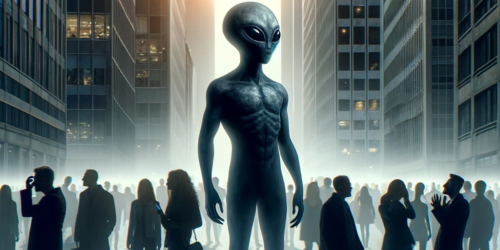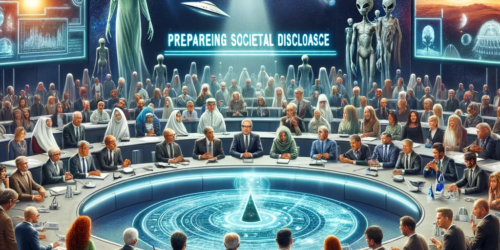Redefining Reality: Physics to Consciousness

Thomas W. Campbell is a physicist, consciousness researcher, and author of “My Big TOE,” a theory that attempts to unify physics and consciousness. His work explores the idea that reality is fundamentally informational and consciousness-based. Campbell’s perspective suggests that materialistic views of reality are limited and that consciousness plays a crucial role in the formation of reality.
Campbell challenges the conventional wisdom in physics, arguing that new theories are often judged by how well they align with current beliefs rather than their intrinsic merit. He posits that every measurement, being observer-dependent, is subjective, countering the notion of purely objective observation.
His counter-argument to the survival-of-the-fittest paradigm emphasizes the importance of cooperation, compassion, and sharing prosperity. He suggests that instead of focusing solely on individual success and material gain, a more compassionate and cooperative approach could lead to a better world.
Campbell defines consciousness as “awareness with a choice,” stressing the importance of choice and decision-making. He questions the nature of free will, asking whether choices are truly free or determined by underlying factors such as ethics or causality.
In his presentation, Campbell talks about shifting from a control, power, and force ethic to one of cooperation, caring, and compassion. He envisions a world where scientific understanding, coupled with a shift in values, leads to a more peaceful and productive society. He emphasizes the role of science in driving this transformation, believing that a fundamental understanding of reality is key to societal change.
Campbell’s theory, “My Big TOE,” aims to provide a more complete, logic-based science that describes both physical and subjective realities. He proposes that this new science could solve the hard problem of consciousness and reconcile various paradoxes in philosophy, metaphysics, theology, and science. He imagines a world where this understanding reorients our perspective, placing greater value on cooperation, caring, and compassion.
He critiques the current state of science, particularly physics, for being heavily influenced by materialism and physicalism. Campbell argues that these perspectives are limited and that a broader understanding of consciousness and its role in reality is necessary.
The comparison between Thomas W. Campbell and The Architect from “The Matrix” film series is quite intriguing, especially when considering aspects like their appearance, manner of speech, and the profound nature of the concepts they discuss. The Architect, portrayed in “The Matrix” as an older, intellectual-looking man typically dressed in a suit and tie, bears a physical resemblance to Thomas W. Campbell, who also presents a dignified and scholarly appearance. When it comes to their manner of speech, The Architect is known for his articulate yet complex dialogue, often weaving into philosophical and existential realms. Similarly, Campbell, in his role as a physicist and consciousness researcher, looks deeply into philosophical and scientific discussions, especially focusing on the nature of reality and consciousness. His presentations, much like The Architect’s speeches, are laden with detail and complexity, probing into the fundamental aspects of existence.
The themes and concepts they explore show a striking parallel. “The Matrix” looks into the nature of reality and perception, suggesting a world beyond our sensory experiences governed by an underlying system. In a similar vein, Campbell’s “My Big TOE” (Theory Of Everything) proposes a reality that amalgamates physics with consciousness, challenging the traditional materialistic views and positing a more intricate and interconnected reality. While Thomas W. Campbell is a real-life physicist and author, and The Architect is a fictional character from a science fiction film, the similarities in their appearances, communicative styles, and the depth of subjects they address offer an interesting comparison. Both present narratives that challenge the audience to rethink their understanding of reality, consciousness, and the fundamental principles of our existence.
Campbell’s work represents a significant departure from mainstream scientific thought. He advocates for a paradigm shift towards a consciousness-centric view of reality, where cooperation and compassion are as fundamental as traditional scientific principles. This shift, he believes, could lead to profound changes in both our understanding of the universe and our approach to societal and personal challenges.



